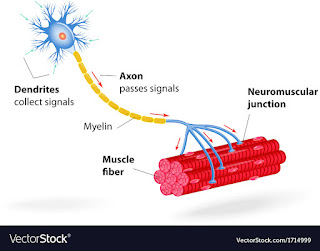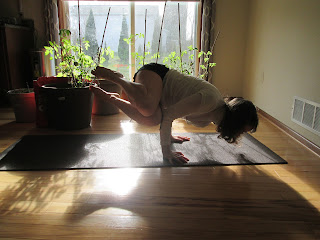The benefits of yoga for chronic pain conditions
Yoga is a mind-body practice that should be
adapted to each person's medical situation. People who are not ambulatory, for
example, can do chair yoga. It is important to know and understand that yoga is
a mindfulness discipline that can be offered within the scope of each person's
limitations. The benefits in mental and physical health can be attained when a
qualified instructor has the intention and knowledge to address safety issues.
Yoga is often used as a
complementary therapy for chronic pain, and the field of research that focuses
on the use of yoga to help relieve various chronic pain conditions is evolving
(1, 2, 3).
Chronic pain affects quality of life and costs
635 billion dollars a year (5). The opioid epidemic in America leads to more
than 24,000 deaths per year, and the COVID pandemic has worsened the opioid
crisis (4). Chronic pain is often the cause of overuse of opioids, which leads
to increased cost of care and mortality (4). The use of opioids for chronic
pain management can impair function and affect quality of life (9).
In August 2019 the Journal
of Evidence Based Integrative Medicine published a pilot study to assess the
benefits of yoga in people with chronic pain (5). Even though 83 patients were
enrolled, sixty-seven participants completed the study.
Sixty-five percent of the
participants (n:43) had chronic pain for over ten years. All participants,
except one, were using opioid medications for pain management. The study was
done in a community-based pain clinic for individuals with any type of pain.
All participants received usual care, which integrates a multifaceted
intervention to improve pain, and it is important to highlight that the clinic
provided care for underserved and underinsured patients.
Participants were
randomized to yoga or just usual care (control group) . Yoga was offered for
one hour twice a week for eight weeks. The Brief Pain Inventory was the primary
outcome; pain severity and interference on daily activities were measured by
using the Brief Pain Inventory, and the patients' quality of life was also
evaluated in response to the intervention.
Most patients reported that
pain was located in more than one area or joint. Twenty-four patients reported
headaches or migraines. Thirty-four patients (57%) indicated that their pain
was related to trauma (automobile accident, work injury, fall). The other
participants (n:9) reported that the pain was a result of medical conditions
such as arthritis, fibromyalgia, cancer and stroke.
The yoga instructors were
also physical therapists or occupational therapists, and they offered props and
modifications of the poses as needed to make the classes safe and accessible.
The adverse events reported were not related to yoga itself but to other
underlying conditions, and these events happened in cases in which the patients
refused to follow the recommendations offered by the instructor. For example, a
patient refused to use a walker despite the fact that balance issues were a
limiting factor, and the use of a walker had been recommended.
Both the yoga group and the
control group had improvements in their quality of life, but the yoga group
also improved in all outcome measures of BPI, except BPI severity. In other studies
in which a specific type of pain was the focus, yoga was shown to be effective
to reduce the severity of the pain. This was a small study, and it was not
powered to detect differences when the various kinds of pain were compared (5).
A study published by Pain
Medicine in July 2020 explored the response of 290 patients with low back pain,
comparing three different interventions by assessing their responses to yoga,
physical therapy and a self-care book during 12 weeks (6). The patients were
divided in three groups depending on the intervention they received. The design
was a secondary analysis of a randomized controlled trial. The results showed
that there were more responders in the yoga group and physical therapy group
(42%) compared to the self-care one (23%). Both yoga and physical therapy
helped to improve the outcome.
Another pilot study in
which participants were randomized and controlled showed that yoga helped to
decrease the severity of the pain and also improved occupational performance
and depression (7). This pilot study researched a group of 83 women and even
though it was not considered inclusive, it concluded that occupational
therapists may consider adding yoga to help with pain management (7) . In 2017
the Annals of Internal Medicine published a study that included 320 low income,
racially diverse patients with non-specific chronic low back pain (8). The
objective was to compare the yoga intervention with physical therapy
intervention in a more inclusive study. The participants were divided into
three groups and randomized to receive 12 weekly yoga classes, 15 physical
therapy visits or an educational book and newsletters (8). Yoga was not found
to be inferior to physical therapy. Adverse events were mild and self-limited.
Both physical therapy and yoga groups were less likely to use pain medication
compared to the education group after the 12 weeks of intervention. The low
frequency of adverse events consisted of self-limited mild joint and back pain
that were present in both the PT and Yoga group. Improvements at one year were
maintained in both the Yoga and the PT group.
More research is needed to
address the role of yoga as a complementary strategy to relieve different
chronic pain conditions.
References:
1) https://www.frontiersin.org/articles/10.3389/fmed.2018.00145/full
2) https://www.ncbi.nlm.nih.gov/pmc/articles/PMC2936076/
3) https://www.ncbi.nlm.nih.gov/pmc/articles/PMC6689911/
4) https://www.thelancet.com/journals/lancet/article/PIIS0140-6736(21)01653-6/fulltext
5) https://www.ncbi.nlm.nih.gov/pmc/articles/PMC6689911/
6) https://academic.oup.com/painmedicine/article-abstract/22/1/165/5869175?redirectedFrom=fulltext
7) https://pubmed.ncbi.nlm.nih.gov/31156199/
8) https://pubmed.ncbi.nlm.nih.gov/28631003/




Comments
Post a Comment
Thank you for commenting.